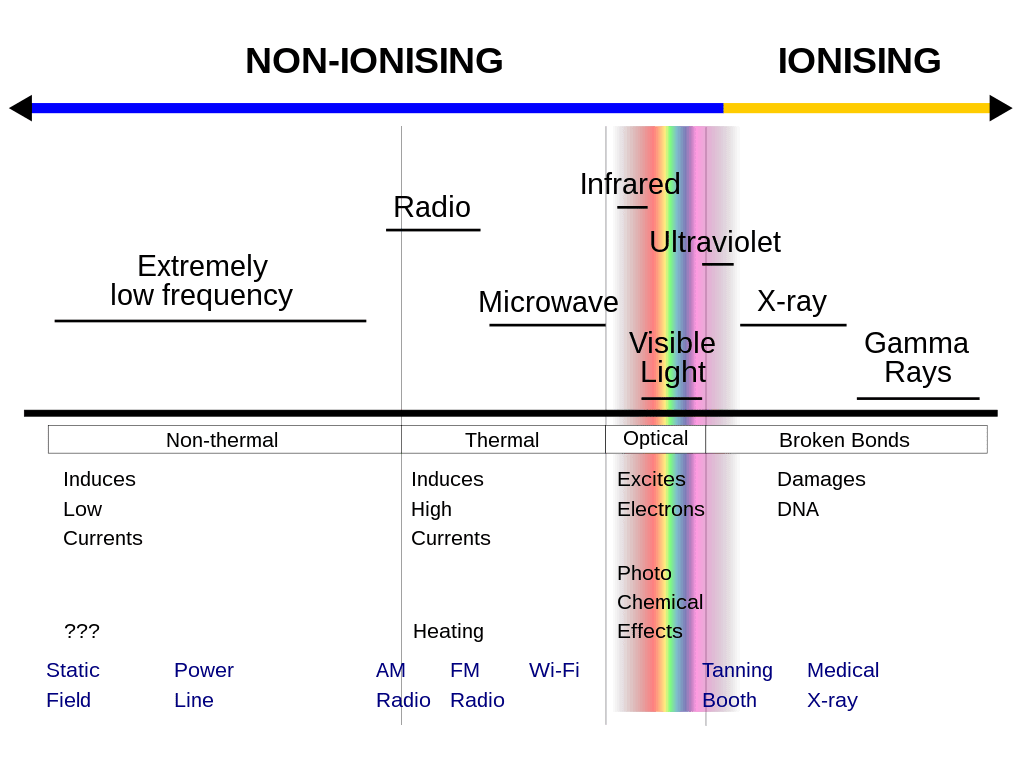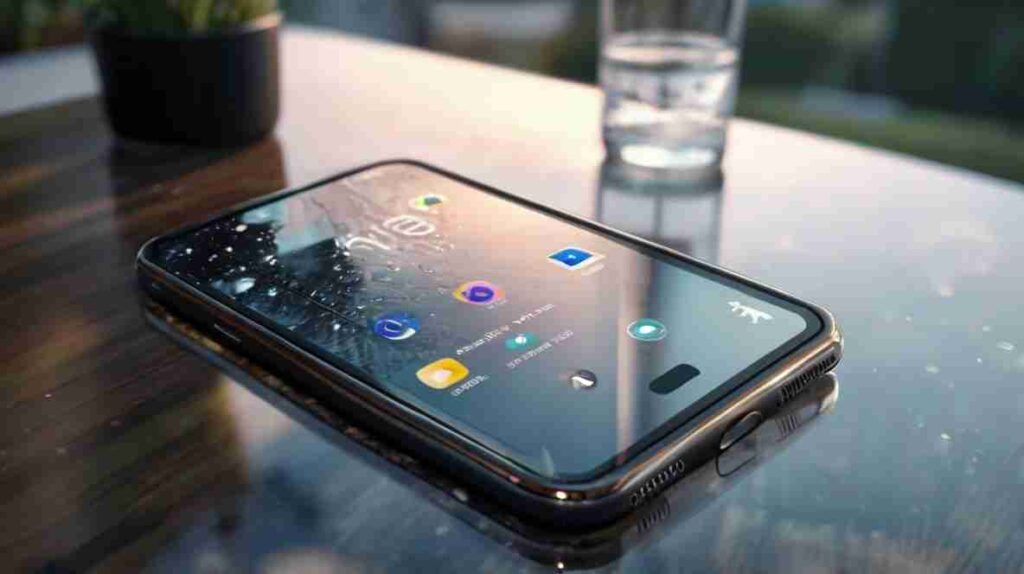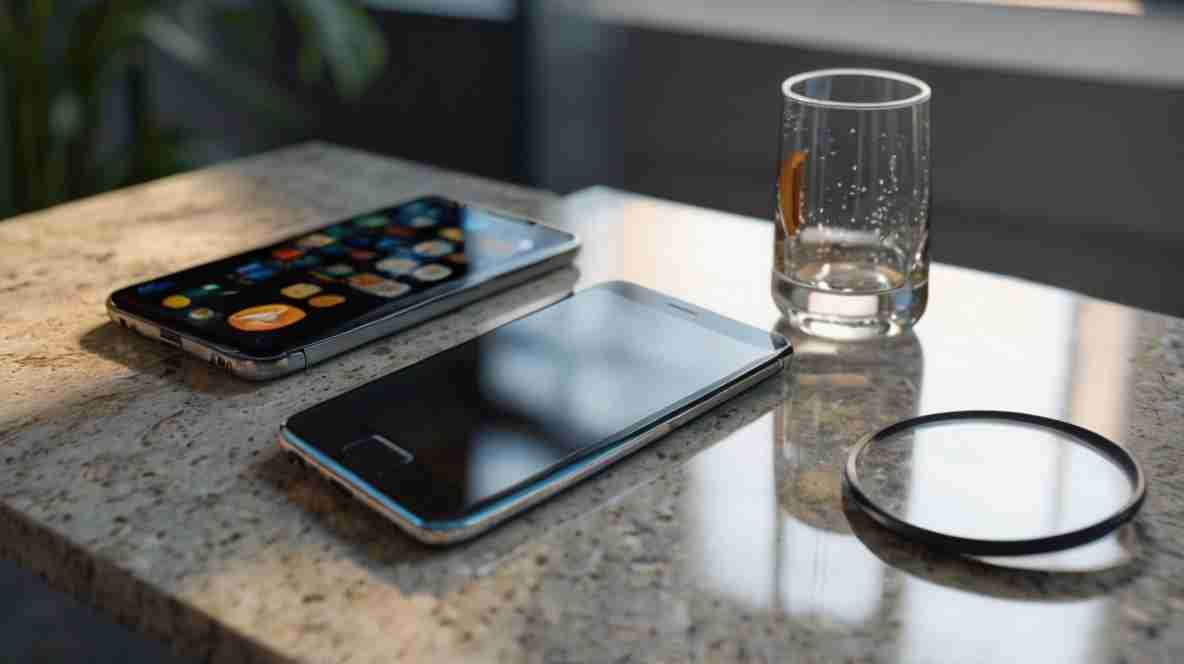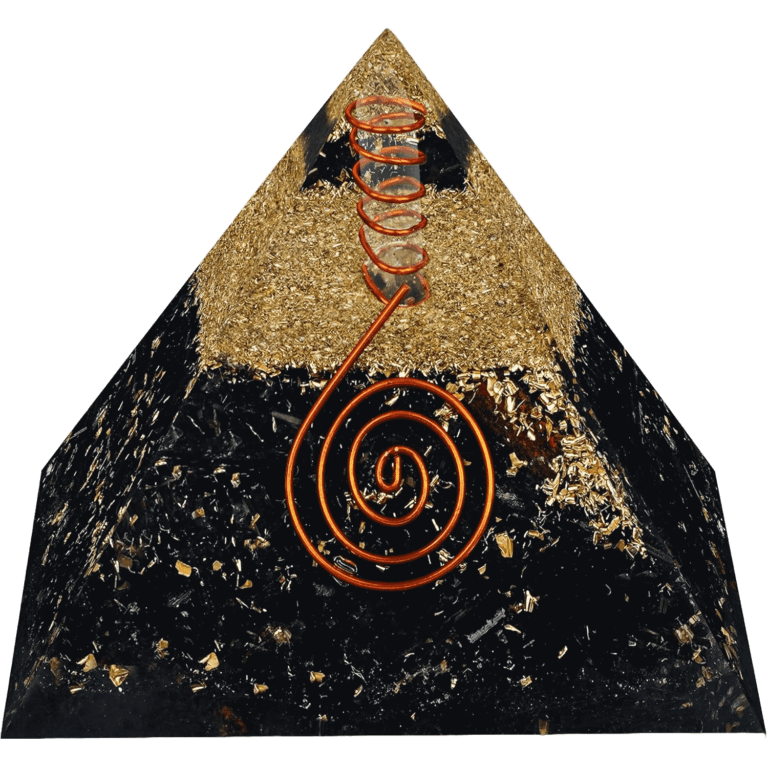Electromagnetic Fields (EMF Radiation) are invisible areas of energy, also known as radiation, that are associated with the use of electrical power and various forms of natural and man-made lighting.
TYPES OF EMF RADIATION
EMFs are produced by both natural and human-made sources. The sun, for instance, sends out waves that create EMFs, or radiation. On the other hand, our power lines, cellphones, microwaves, Wi-Fi routers, computers, and other appliances send out a stream of invisible energy waves.
EMFs can be categorized into two types based on their frequency:
- Higher-frequency EMFs: in the ionizing part of the electromagnetic spectrum the can damage DNA or cells. As an example, we have x-rays or gamma rays.
- Low to mid frequency EMFs: in the non-ionizing radiation part of the spectrum, it is believed that don’t damage DNA or cells in a direct way. We are talking about infrared radiation, microwaves, radio waves, light, or also for example the 5G of mobile phones or the cell tower radiation, which are radio frequency waves.

This division may vary according to some experts, who distinguish between 3 categories of EMF:
- Radio Frequency fields (from 3kHz to 300 GHz)
- Extremely-low frequency fields (1 Hz to 3kHz)
- Static electric and magnetic fields (0Hz to 1 Hz)
The strength of a magnetic field decreases rapidly with increasing distance from its source. Electric fields are easily shielded or weakened by walls and other objects, whereas magnetic fields can pass through buildings, living things, and most other materials.
MEASURING THE EMF RADIATION
The correct way to measure EMF exposure is using an EMF meter, or also called EMF reader, which is a scientific instrument used to measure electromagnetic fields. These meters are designed to detect and measure the electromagnetic radiation flux density (DC fields) or the change in an electromagnetic field over time (AC fields), essentially functioning similarly to a radio antenna but with different detection characteristics.
HOW DOES AN EMF METER WORK?
EMF meters work by measuring the ‘Electromagnetic Radiation Flux Density’ to gauge the change in energy in the field. The greater the flux density, the stronger the electromagnetic radiation. Due to the sensitive components within its construction, even a slight change in energy is easily detected by this instrument.
EMF meters can have a single or tri-axis sensor. A single-axis detector is less expensive but has only one sensor and requires the meter to be rotated within the magnetic field for accurate readings. On the other hand, a tri-axis (or ‘tri-field’) EMF detector uses all three directions (X, Y, Z) to measure electromagnetic radiations, providing more accurate results without the need for adjustments.
RECOMMENDED PRECISION OF AN EMF METER
The precision of an EMF meter can vary based on the type of radiation-emitting field you want to measure: magnetic, electric, radio, or harmonic. The precision also depends on the range of Hertz measurements the meter is designed to detect. However, the exact recommended precision can vary based on the specific use case and the environment in which the meter is being used.
BEST MODELS OF EMF METERS
There are several high-quality EMF meters available in the market. Here are some of the top models based on accuracy, ability to measure all types of EMF radiation, cost, user-friendliness, and features:
- Trifield TF2 – Known for its accuracy and user-friendliness, the Trifield TF2 is a top choice for many homeowners. It measures all types of EMF radiation (RF, EF, MF) and is praised for its affordability.
- Acoustimeter AM-10 – This model is highly accurate and specifically designed to detect RF radiation.
- Cornet ED88T – A versatile meter that can measure RF, EF, and MF radiation.
- Erickhill EMF Meter – A budget-friendly option that doesn’t compromise on accuracy. It measures EF and MF radiation.
- GQ EMF-390 – This model is known for its comprehensive detection capabilities, including RF, EF, MF, and even 5G radiation.
- Latnex HF-B3G – This model is praised for its accuracy in measuring RF, EF, and MF radiation.
- Engindot EMF Meter – In addition to EF and MF radiation, this meter also measures temperature.
- Latnex AF-5000 – This model stands out for its ability to detect 5G radiation, in addition to RF, EF, and MF.
- Meterk EMF Meter – A simple and user-friendly option for measuring EF and MF radiation

TRIFIELD TF2 EMF METER
- Detects all three types of EMF pollution: Magnetic, Electric, and Radio/Microwave Fields
- Measures 4G and 5G cell phones, cell towers, WiFi routers, Bluetooth, AC Powerlines, and Smart Meters
MEASURING EMF RADIATION AT HOME
To measure EMF radiation at home, you can use portable meters specifically designed to identify various radiation levels associated with different kinds of EMF that can be present in your house. You can also use a wall sensor or call a professional for a thorough assessment.
The accuracy of an EMF meter depends on several factors, including the type of radiation it’s designed to measure, its sensitivity, range, and whether it’s a single or tri-axis detector.
Most accurate EMF meters show readings in milligauss (mG) up to decimal points. The better EMF meters can measure a number of types of radiation. For instance, the Trifield TF2, which is highly recommended for home use, has an accuracy rating of 4.5/51. The Acoustimeter AM-10, another top choice, also has an accuracy rating of 4.5/51.
However, it’s important to note that while these meters provide a good indication of the levels of EMF radiation, they may not be as sensitive or precise as professional-grade meters used by scientists or EMF consultants. Therefore, for a comprehensive assessment of EMF levels in your home, you might want to consider hiring a professional.
USING YOUR IPHONE TO MEASURE EMF
Modern smartphones, including iPhones, come equipped with a magnetometer, which can be used to measure magnetic forces. Some apps can utilize this feature to detect the level of magnetic field radiation in your area. However, the accuracy of these apps is often compromised by interference from the phone’s own magnetic field and the Earth’s magnetic field.
Compared to professional EMF meters, smartphone apps may not provide the same level of accuracy or the ability to measure all types of EMF radiation. Therefore, for a comprehensive and accurate measurement of EMF radiation, a professional EMF meter is recommended.
MAIN EMF SOURCES AT HOME
Electromagnetic fields (EMFs) are present everywhere in our environment but are invisible to the human eye. EMFs are generated by the movement of electrically charged objects. In the home, this includes a wide range of devices and installations. Here are some of the most common sources:
- Electrical Appliances: Almost every household appliance that runs on electricity generates some level of EMF. This includes refrigerators, microwave ovens, hair dryers, vacuum cleaners, televisions, and washing machines.

- Computers and Wi-Fi Equipment: Computers, especially when connected to the internet via Wi-Fi, are significant sources of EMF. Wi-Fi routers themselves also emit EMF.

- Mobile Phones and Tablets: These devices not only create EMF but also often are used in close proximity to the body, which can lead to higher exposure levels.

- Power Lines: Both overhead and underground power lines produce EMF. The level of EMF can vary depending on the voltage and the current flow.
- Home Wiring: Electrical wiring in walls and ceilings can also generate EMF. Faulty wiring or a phenomenon known as ‘stray electricity’ can increase EMF levels.
- Heating Pads and Electric Blankets: These items can produce a high level of EMF, especially if they are old and the wiring is degraded.

- CFL and LED Lights: Compact fluorescent lights (CFLs) and light-emitting diode (LED) lights can produce EMF. The level is typically lower than other sources, but it can add to the overall EMF level in the home.
So, we can conclude that EMFs in a house are produced anywhere electricity is used, being the strongest emitters induction countertops and microwave ovens. Wi-Fi routers also do emit EMF radiation, because they constantly emit EMF radiation to provide wireless internet connectivity to various devices within their range.
THE CASE OF SMARTPHONES
Cell phones, including iPhones, also emit EMF radiation because they communicate by transmitting radio waves through a network of fixed antennas called base stations. To measure how strong a smartphone emits EMF, we have the SAR (Specific Absorption Rate) value, which shows how strong the energy is that is absorbed by our body through mobile phone radiation
The amount of EMF an iPhone emits can vary based on the model. For example, tests carried out by the French Agency for Radio Frequencies (ANFR) showed that the iPhone 12 emitted 5.74 watts per kilogram when simulating the phone being held in the hand or kept in a pocket. As a comparison, an old model of iPhone, the 3GS, showed a SAR rating of 0.67 W/kg.
For the newest models the SAR values are as follows:
iPHONE 14
- Head SAR (EU): The SAR value for the head in the European Union is 0.98 W/kg.
- Body SAR (EU): The SAR value for the body in the European Union is also 0.98 W/kg.
- Head SAR (US): The SAR value for the head in the United States is 1.15 W/kg.
- Body SAR (US): The SAR value for the body in the United States is 1.16 W/kg.
iPHONE 15
- Head SAR (EU): The SAR value for the head in the European Union is 0.98 W/kg.
- Body SAR (EU): The SAR value for the body in the European Union is also 0.98 W/kg.
- Head SAR (US): The SAR value for the head in the United States is 1.496 W/kg.
- Body SAR (US): The SAR value for the body in the United States is 1.444 W/kg.
CHECKING THE EMF RADIATION OF YOUR iPHONE
To check the radiation level of your iPhone, you can conduct a quick SAR check by opening the Phone app on your iPhone, entering the USSD code *#07#, and pressing the call button to initiate the call. A menu will appear on your screen, presenting different options related to legal and regulatory compliance. Select the option that corresponds to RF Exposure or SAR value. A new page will open, displaying information about the SAR value of your iPhone.
BEST AND WORST SMARTPHONE MODELS
The phone with the lowest radiation ever measured was the ZTE Blade V10, with a SAR of 0.1315. By major manufacturer, the Samsung Galaxy Note 8 showed the best results with a SAR of 0.1715.

The models with the worst tested SAR values were:
- Motorola Edge: SAR level of 1.79 W/Kg.
- ZTE Axon 11 5G: SAR level of 1.59 W/Kg.
- OnePlus 6T: SAR level of 1.55 W/Kg.
- Motorola Droid Maxx and Motorola Droid Ultra: SAR value of 1.542.
- Huawei Honor 8: SAR value of 1.52.
- Alcatel One Touch Evolve and Huawei Vitria: SAR value of 1.492.
To check the radiation level of your iPhone, you can conduct a quick SAR check by opening the Phone app on your iPhone, entering the USSD code *#07#, and pressing the call button to initiate the call. A menu will appear on your screen, presenting different options related to legal and regulatory compliance. Select the option that corresponds to RF Exposure or SAR value. A new page will open, displaying information about the SAR value of your iPhone.
EMF DANGERS
We now enter one of the most controversial chapters and one that sparks the most debate within the scientific community. Is EMF bad for humans? Why is EMF bad for you? What does EMF do to your body? What does EMF do to your brain? And to your heart? Which are the 5g health dangers?. All these questions, which we have surely asked ourselves more than once since the mobile era began, are nothing more than a reflection of our concern that behind the increases in cases of all kinds of diseases that we see in relatives and friends, there may be those devices that live with us day by day and provide us with all kinds of comforts, such as refrigerators, ovens, toasters, televisions, mobile phones, etc.

What we clearly know according to scientific evidence: EMF becomes dangerous when it is of high enough frequency to become ionizing radiation. This includes X-rays, gamma rays, and some higher-energy ultraviolet rays. These types of EMFs can damage DNA or cells directly.
The situation is not so clear with the low frequency EMFs produced by everyday devices like cell phones, Wi-Fi routers, and microwaves. In this case, The World Health Organization and other health bodies maintain that pose little danger to human health, however, some scientists question the safety of even these low-frequency EMF exposures, arguing that more research is needed.
Let’s examine the existing scientific evidence to date for a series of ailments associated with the electromagnetic radiation dangers.
ELECTROMAGNETIC HYPERSENSITIVITY (EHS)
Electromagnetic hypersensitivity (EHS), also known as Wi-fi sickness, is a condition in which individuals report various symptoms that they attribute to exposure to EMF. Symptoms can vary widely between individuals but commonly include fatigue, pain, headaches, dizziness, burning, twitching, nausea, and palpitations.

But, at this point you’re probably thinking: is this sensitivity real? The answer is still under debate. While some individuals report severe symptoms and attribute them to EMF exposure, scientific research has not been able to confirm a direct link. The World Health Organization (WHO) and Public Health England, for instance, state that there’s no scientific basis that these symptoms are linked to electromagnetic field exposure. However, a handful of scientists and individuals suffering from these symptoms maintain that EMFs are dangerous.
References:
Electrosensitivity: ‘I didn’t believe people had it, then it happened to me’. BBC
Electromagnetic hypersensitivity: a critical review of explanatory hypotheses. Maël Dieudonné
Causal perception is central in electromagnetic hypersensitivity – a commentary on “Electromagnetic hypersensitivity: a critical review of explanatory hypotheses’’. Christoph Boehmert, Michael Witthöft & Omer Van den Bergh
Review of the scientific evidence on the individual sensitivity to electromagnetic fields (EHS). Dariusz Leszczynski
EMF AND CANCER
As we have seen in the beginning of the article, EMF can be categorized according to their frequency, being Low- to mid-frequency EMFs those that is supposed don’t directly harm DNA or cells.
The World Health Organization’s International Agency for Research on Cancer (IARC) classifies EMFs as “possibly carcinogenic to humans” based on limited evidence. However, no definitive link between EMFs and cancer has been established.

Mobile Phones: Mobile phone EMFs fall into the low- to mid-frequency range. The IARC considers them “possibly carcinogenic,” but the evidence remains inconclusive.
For example, in 2015 was conducted the study “Effects of Cell Phone EMF Radiations on the Auditory System- A Review” finding no direct evidence with the risk of developing an acoustic neuroma. The study suggested more research to clearly dismiss the risk of EMF.
Wi-Fi and General EMFs: Wi-Fi and other non-ionizing EMFs have not been definitively linked to cancer. No mechanism by which these EMFs directly cause cancer has been identified.
Precautions:
While the evidence is not conclusive, some precautions are advisable to avoid possible EMF health effects:
- Limit exposure to high EMF sources (e.g., power lines) if possible.
- Use hands-free devices for mobile phones.
- Follow safety guidelines for EMF exposure.
References:
Effects of Cell Phone EMF Radiations on the Auditory System- A Review. Yogesh G. Dabholkar, A.G.Pusalkar, H.K.Velankar
EMF AND TINNITUS
Tinnitus is the perception of ringing, buzzing, or other sounds in the ears without an external source. The exact cause of tinnitus is often unknown.

While there are studies that have investigated the effects of EMF exposure on various health conditions, the specific link between frequent EMF exposure and chronic tinnitus is not clearly established.
The study “Electromagnetic hypersensitivity: a critical review of explanatory hypotheses” discusses the phenomenon of electromagnetic hypersensitivity, where individuals experience health symptoms that they believe are triggered by exposure to EMF
Another study “Systematic review of the physiological and health-related effects of radiofrequency electromagnetic field exposure from wireless communication devices on children and adolescents” found no clear evidence that exposure to EMF from mobile communication devices poses a particular risk to children and adolescents.
New studies combining provocation approaches (where volunteers are exposed to EMF) and molecular-level analyses (transcriptomics and proteomics) are proposed to generate objective data on individual responses to EMF. In the meantime, anybody suffering tinnitus should consider minimizing EMF exposure.
References:
Electromagnetic hypersensitivity: a critical review of explanatory hypotheses. Maël Dieudonné
Systematic review of the physiological and health-related effects of radiofrequency electromagnetic field exposure from wireless communication devices on children and adolescents. Lambert Bodewein ,Dagmar Dechent,David Graefrath,Thomas Kraus,Tobias Krause,Sarah Driessen
EMF AND HEART PROBLEMS
As we have seen, while most researchers don’t believe most EMFs are dangerous, there are still some scientists who question the safety of EMF exposure.

One of the main issues that has been associated with EMF and is object of discussion between scientists, are the heart problems. There is a study that clearly identify a decrease trend between systolic blood pressure, diastolic blood pressure, and heart rate and higher mobile phone usage in women. However, according to some other studies there is no direct evidence between EMF and heart problems. Is clear that more research will be needed to clearly dismiss the risk.
Among the group of heart problems, another health issues commonly associated with EMF exposure is heart palpitations. Heart palpitations refer to feelings of a rapid, fluttering, or pounding heart. According to some reports, individuals exposed to EMFs have experienced heart palpitations, along with other symptoms such as sleep problems, fatigue, restlessness, and blood pressure problems.
Anxiety is another symptom that has been associated with EMF exposure. However, in this case it has been no possible to stablish a clear relationship between EMF and heart anxiety.
References:
The association between self-reported mobile phone usage with blood pressure and heart rate: evidence from a cross-sectional study. Fatemeh Amiri, Mehdi Moradinazar, Jalal Moludi, Yahya Pasdar, Farid Najafi, Ebrahim Shakiba, Behrooz Hamzeh & Amir Saber
Insights in the biology of extremely low-frequency magnetic fields exposure on human health. Abbas Karimi, Farzaneh Ghadiri Moghaddam & Masoumeh Valipour.
Exposure to extremely-low-frequency electromagnetic fields and radiofrequency radiation: cardiovascular effects in humans. James R. Jauchem.
Radiation from wireless technology affects the blood, the heart, and the autonomic nervous system. Magda Havas
EUROPAEM EMF Guideline 2016 for the prevention, diagnosis and treatment of EMF-related health problems and illnesses. Igor Belyaev , Amy Dean , Horst Eger , Gerhard Hubmann , Reinhold Jandrisovits , Markus Kern , Michael Kundi , Hanns Moshammer , Piero Lercher , Kurt Müller , Gerd Oberfeld EMAIL logo , Peter Ohnsorge , Peter Pelzmann , Claus Scheingraber and Roby Thill
Physiological changes and symptoms associated with short-term exposure to electromagnetic fields: a randomized crossover provocation study. Po-Chang Huang, Jui-chin Chiang, Ya-Yun Cheng, Tain-Junn Cheng, Chien-Yuan Huang, Ya-Ting Chuang, Ti Hsu & How-Ran Guo
EMF AND HEADACHES
There have been several studies investigating the potential link between EMF exposure and headaches.

A systematic review and meta-analysis published in the International Archives of Occupational and Environmental Health examined the effects of mobile phone electromagnetic radiation on headaches. The study included 33 eligible studies and found a significant association between mobile phone use and headaches. The pooled effect size of odds ratio (OR) was 1.30 (95% CI 1.21–1.39), indicating a higher risk of headaches with mobile phone use. The study also revealed that age and exposure duration (mainly call duration) were the sources of heterogeneity between studies.
References:
Mobile phone electromagnetic radiation and the risk of headache: a systematic review and meta-analysis. Sajjad Farashi, Saeid Bashirian, Salman Khazaei, Mojtaba Khazaei & Abdollah Farhadinasab
CONCLUSION
With regard to the danger of EMF for humans, we can conclude that although there is not in most cases a direct connection between different ailments and this type of radiation, there are suspicions, accompanied by some studies, that indicate that we could be facing a problem for individual health.
Additional effects have been attributed to EMF radiation from cell phones, including impacts on sperm quality and reproductive issues.
For all these reasons, it is reasonable to adopt a protective attitude towards this type of radiation, both passively and actively, until new studies are carried out or science advances enough to clarify the risks. In this sense, is recommendable for example to avoid sleeping near a Wi-fi router, or a mobile cell phone. Let’s see all these points in the next chapter.
FIGHTING AGAINST THE EMF RADIATION
While the scientific community tries to definitively clarify whether EMFs pose a risk to people, let’s see what we can do to minimize their possible effects.
PASSIVE MEASURES. AVOIDING THE EXPOSURE
The first line of defense against EMFs is to avoid exposing ourselves to them as much as possible. In this regard, follow the recommendations indicated below.
- Turn off Bluetooth: turning off Bluetooth can help reduce your exposure to EMF. Bluetooth is another source of EMF radiation, and when it’s not in use, it’s best to turn it off. This can be particularly beneficial if you use Bluetooth devices like headphones, which are often close to your head.
- Turn off you cell phone when is not in use: Even though nowadays nobody turns off their smartphone, consider doing so in those moments when it is not necessary to have it on, for example while you sleep. This is the best way to “turn off” the radiation of your cell phone.

- Put your smartphone at a safe distance from your body: carrying your phone in a bag instead of your pocket can help to minimize exposure to radiation. In the same way, when you’re at home, avoid placing your phone next to you; instead, place it on a table or desk away from where you’re sitting.
- Leave your mobile as far away as possible from you when you sleep: while there’s no universally agreed-upon distance, experts suggest keeping your phone at least 3 feet away from you while you sleep. This distance helps to significantly reduce your exposure to EMF radiation. As commented before, it’s also recommended to switch your phone to airplane mode or turn it off entirely during the night to further decrease radiation exposure.
- Reduce the Wi-Fi radiation inside your house: Wi-Fi routers also emit EMF radiation, and there are several ways to reduce exposure in your home. One effective method is to turn off your Wi-Fi router when it’s not in use. You can also consider using Ethernet cables instead of Wi-Fi for a wired internet connection. If you must use Wi-Fi, place the router in a central location in your home, away from areas where you spend a lot of time. Some people also use Wi-Fi router guards, which can block up to 90% of radiation.
Since there is not a consensus of how much EMF is dangerous (in fact there is not a consensus if it’s dangerous indeed), these measures will help you to avoid possible health long-term problems if one day science finally demonstrate the risk of this kind of radiation.
ACTIVE MEASURES. BLOCKING THE EMF RADIATION
The next line of defense against EMFs is to try to block this type of radiation either completely or partially. Let’s look at some methods to achieve this.
CONSIDERING WIRED DEVICES
The best way to block and avoid EMF exposure is considering the possibility of using wired devices instead of wireless ones. Probably in many cases won’t be possible, but if so, it should be the priority.
USING TREES AND PLANTS
Trees cannot completely block EMF radiation, but they can reduce the amount of radiation when it passes through them. The same is happening with some indoors plants like cactus, sunflowers, or snake plants, that can reduce the amount of radiation by physically blocking it when passes through them. However, the absorption is not complete and should not be relied upon as the sole means of radiation protection.

USING HOUSEHOLD MATERIALS
Certain materials can block radiation, including lead, concrete, reinforced polymer composites, and water. However, no single household item can protect against all forms of radiation. A good combination of plants and concrete walls can help to create a free-EMF areas or rooms inside an apartment.
Probably the best material for blocking radiation is lead. Thanks to its high density and atomic number, its ability to block even the most dangerous high-frequency radiations has been known for decades. However, due to its carcinogenic nature, it is not widely used in household applications.
References:
A guidet o the use of lead for radiation shielding
USING MINERALS
Certain minerals, such as shungite, obsidian, and black tourmaline, can block or even transmute the frequencies of EMFs. In this sense, there are many options to take advantage of the properties of these materials, one of them being orgonites. These devices, made of resin, metal, and healing crystals, can be used to protect large areas of the home when used in the form of a pyramid or tower buster, or carried around when used in the form of a pendant or keychain.
USING SALT LAMPS
Contrary to what is thought, there’s no scientific evidence to suggest that salt lamps can block or absorb EMF radiation. While they are often marketed as natural ionizers, their ability to reduce exposure to EMF radiation is not scientifically proven.
EMF RADIATION CURIOSITIES
Some individuals believe that electromagnetic fields (EMFs) attracts bugs. However, while there is evidence that insects can be affected by EMFs, the specific ability of bugs to be attracted to EMFs is not well-studied.
References:
Biological effects of electromagnetic fields on insects: a systematic review and meta-analysis. Alain Thill, Marie-Claire Cammaerts and Alfonso Balmori
What evidence exists on the impact of anthropogenic radiofrequency electromagnetic fields on animals and plants in the environment? A systematic map protocol. Ken Karipidis, Chris Brzozek, Chhavi Raj Bhatt, Sarah Loughran & Andrew Wood.





















